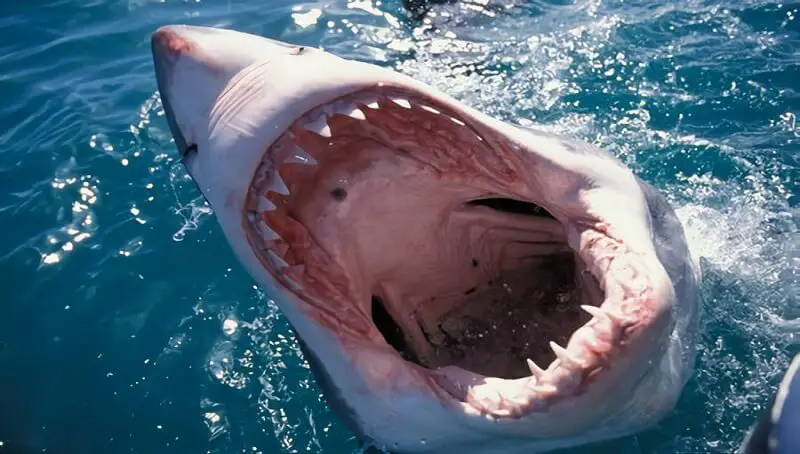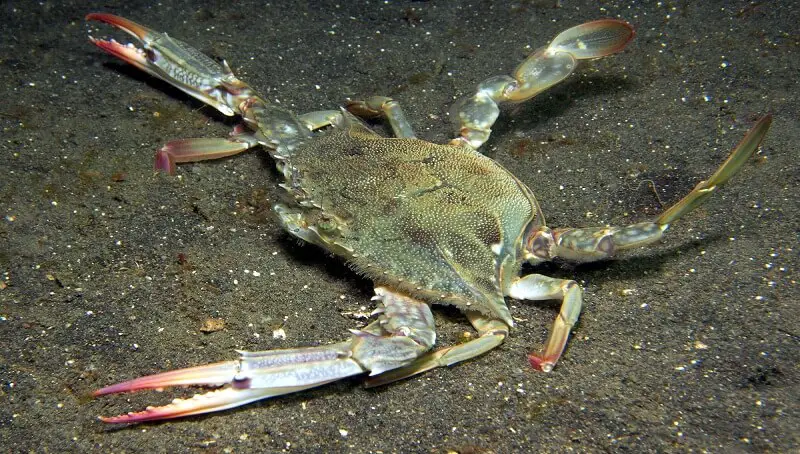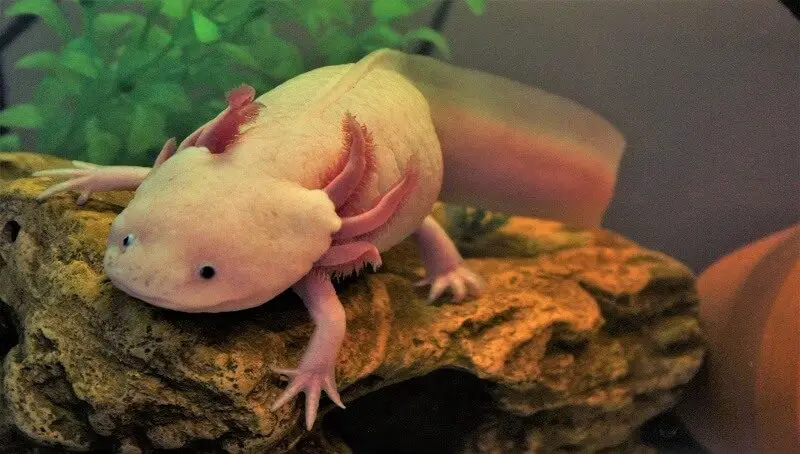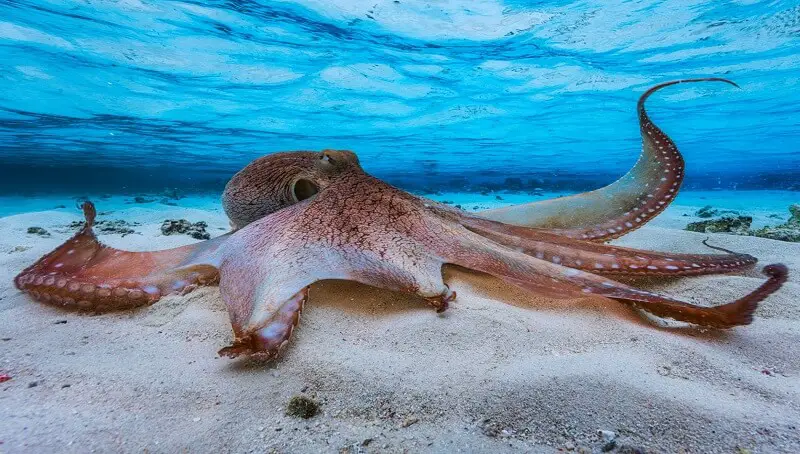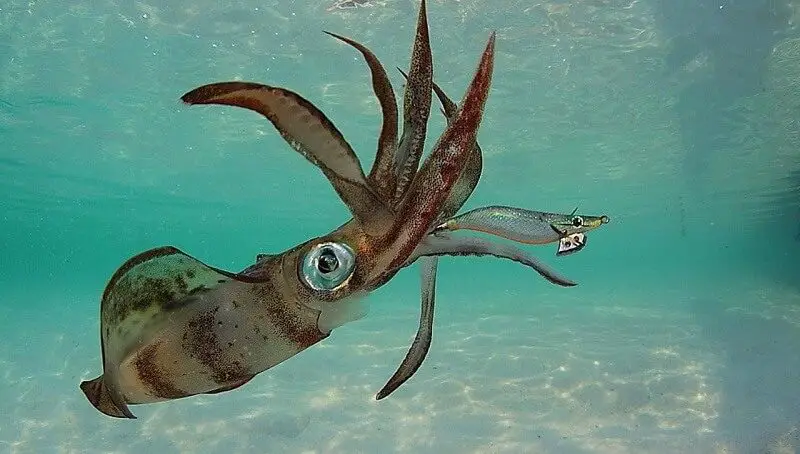According to the definition, the shark is a cartilaginous fish with a hydrodynamic body, part of the clade Selachimorpha.
Researchers estimate that sharks appeared in Earth’s oceans about 400 million years ago.
There are currently more than 400 species of sharks that are structured in 8 orders.
One of the most famous species of shark is “Megalodon” – a huge shark whose body had the same length as a Tyrannosaurus REX, with teeth exceeding 15 cm long and which could swallow a prey with the size of a car.
Do sharks have tongues?
Sharks have a tongue called a basihyal. Basihyal is a small, thick piece of cartilage located on the floor of sharks’ mouths and other fish, and usually does not move.
It seems to be useless for most sharks, except for the cookie-cutter shark. The Cookiecutter shark uses the basihyal to snatch pieces of meat from its prey.
Although the exact number varies by species, sharks can have up to 15 rows of teeth on each jaw. The larger and stronger teeth are placed on the front rows and the smaller ones on the rear rows.
As front teeth become damaged or fall, they are replaced by rear teeth. Throughout its life, a shark can grow between 30.000 and 50.000 teeth.
Do sharks Have Taste Buds?
The taste is felt by the taste buds located on the pads that are lining the mouth and throat of the shark. Gustatory receptors help the shark to decide whether the prey is suitable or not before ingesting what’s in its mouth.
Some Facts About Sharks
Sharks have a very developed sense of hearing; some species are believed to be able to hear prey even from a kilometer away.
The smallest shark in the world is the dwarf lantern shark and it is only 18 cm long.
A white shark of 1.208 kg and 5.2 meters was the largest fish ever caught with the fishing rod.
You might also like my articles on whether snails have teeth, whether tortoises eat celery, and whether deer can swim.
The great white shark can eat up to 11 tons of food per year, while one man eats an average of 500 kg per year.
Most sharks must swim constantly to force water to pass through their mouth and gills because they lack the ability to pump water through gills as most fish do.
On average, a shark has around 40-45 teeth which are constantly replaced. During its life, a shark can change about 30.000 teeth.
The flesh of a shark consists of 30 to 80 % water, and the necessary consistency is given by a number of proteins.
Approximately 50 species of shark have bright organs called photophores. The photophores are used for camouflage or to attract a partner.
Once in a while, the female shark can reproduce without any contact from the male; this process is known as parthenogenesis.
When the embryos grow their teeth, they attack their brothers and sisters until only one remains; this act is known as intrauterine cannibalism.
Do Sharks Eat People?
Sharks do not attack people intentionally. They do not want to eat them, because they are not part of their natural diet. What happens is that sometimes they can confuse people with prey. Even so, 97% of sharks are harmless to us and only 3% are in the category of those who hunt large marine creatures and could attack humans. Many attacks will happen when people either harass sharks in water or even on land, they harass fish in their area or try to feed them.
Most people, more than 90%, survive these kinds of attacks when the shark quickly realizes it made an error and is unlikely to continue the attack after the test bite — but, sometimes it can be lethal.
There are some basic rules to avoid such a rare situation. Attacks generally occur when you swim, surf, or dive in the following situations:
- in areas where sharks frequently hunt
- where there are deltas or confluence
- at times of sunrise or sunset, when sharks come closer to the shore
- while fishing
- when they interact with sharks.
Do Sharks Eat Other Sharks?
In general, sharks feed on fish, squid, and crustaceans. Sharks also feed on dolphins, birds, and turtles. Some sharks feed even on other sharks. The interesting thing is that the largest sharks swallow the smallest quantities of food.
Are Sharks warm or cold-blooded animals?
Sharks are cold-blooded. This implies that the shark’s body temperature is regulated by weather conditions and the environment. Sharks depend on the external environment for their body temperature.
Most sharks, like most fish, have cold or ectopic blood. Their body temperature matches the temperature of the water around them.
 There are, however, 5 species of sharks that have warm blood or endothermic capacities. The Lamnidae family, known as mackerel sharks, includes the great white shark (Carcharodon carcharias), the short-fin mako shark (Isurus oxyrinchus), the longfin mako shark (Isurus paucus), the porbeagle shark (Lamna nasus), and the salmon shark (Lamna ditropis). This family has the unique ability to raise the internal temperature of the body above that of its environment by using a highly developed network of blood vessels that retain the heat produced by their muscles.
There are, however, 5 species of sharks that have warm blood or endothermic capacities. The Lamnidae family, known as mackerel sharks, includes the great white shark (Carcharodon carcharias), the short-fin mako shark (Isurus oxyrinchus), the longfin mako shark (Isurus paucus), the porbeagle shark (Lamna nasus), and the salmon shark (Lamna ditropis). This family has the unique ability to raise the internal temperature of the body above that of its environment by using a highly developed network of blood vessels that retain the heat produced by their muscles.
The white shark is able to maintain its stomach temperature up to 57°F (14°C) warmer than the surrounding water temperature.
The Salmon shark has probably the “hottest blood” and maintains its body temperature at approximately 25° C (77 ° F). It is 70° F (21° C) warmer than the sub-Arctic waters in which it lives.
How Do Sharks Survive In Water?
Neutral flotation means being as heavy or dense as the fluid around you so that you won’t sink or float upward.
Sharks have several adjustments that can help them to be neutral. Sharks do not have real bones, but they have cartilaginous skeletons that are much lighter. Sharks also have large livers, full of low-density oils, which offer a certain buoyancy.
While sharks lack a native bladder many bony fish have. Some species of sharks such as sand tigers (carcharias taurus) can actually swallow air in their stomach, which can provide additional buoyancy.
It should also be noted that mammals breathe through their lungs. Fish use gills to facilitate their breathing. Sharks have gills that help them inhale oxygen from the water.
As a short conclusion to the article’s title: yes, sharks do have a type of tongue, but it doesn’t function in the same way as that of a human or as of any other animal.
